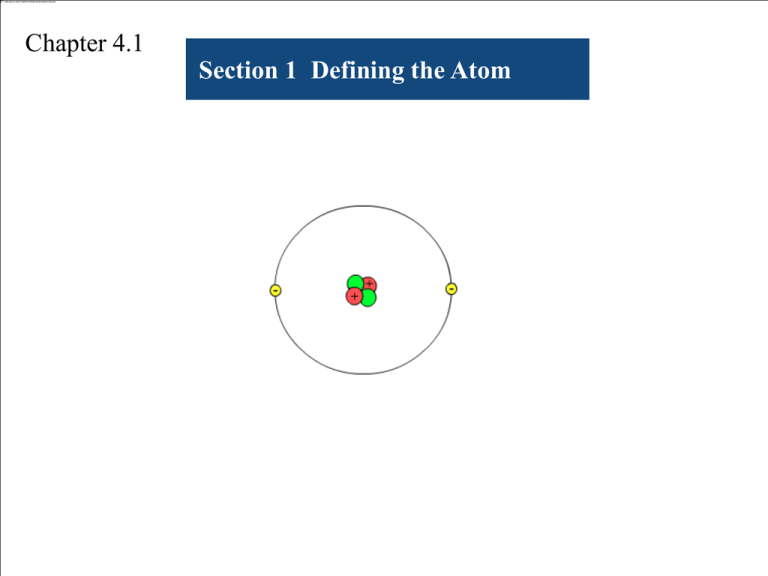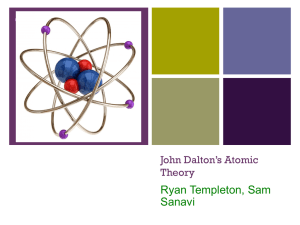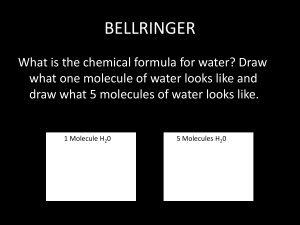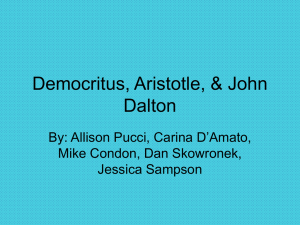4.1
advertisement

Chapter 4.1 Section 1 Defining the Atom Electric Charge Activity Materials four 25-cm lengths of clear plastic tape and a metric ruler Procedure 1.Firmly stick two of the 25-cm pieces of tape side-by-side, about 10 cm apart, on your desktop. Leave 2 to 3 cm of tape sticking over the edge of the desk. Grasp the free ends of the tapes and pull sharply upward to peel the tape pieces off of the desk. Slowly bring the pieces, which have similar charges, toward one another. Record your observations. 2.Pull the third and fourth pieces of tape between your thumb and forefinger several times, as if trying to clean each one. Slowly bring these two pieces of tape, which now have similar charges, toward one another. Record your observations. Think About It 1.Predict what might happen if you brought a piece of tape pulled from your desktop close to a piece of tape pulled between your fingers. Try it, and see what happens. Explain your observations. 2.Do you think the pieces of tape used in Step 1 have the same charge as those used in Step 2? Explain. Common Ancient View of the Elements Air Fire Plato Water Earth Democritus: 460 B.C. – 370 B.C. Democritus believed that matter consisted of tiny, indivisible, unchangeable particles called atoms. His ideas were later challenged by the Greek philosophers Plato and Aristotle. The Alchemists Worked during the Middle Ages trying to transform base metals into gold. They were the forerunners of modern chemists. Dalton, John (1766 - 1844) By using experimental methods, Dalton transformed Democritus’s ideas on atoms into a scientific theory. Dalton's atomic theory the first theory to relate chemical changes to events at the atomic level (4.1) 1.All elements are composed of tiny indivisible particles called atoms. 2. Atoms of the same element are identical. The atoms of any one element are different from those of any other element. 3. Atoms of different elements can physically mix together or can chemically combine in simple whole-number ratios to form compounds. mixture compound 4. Chemical reactions occur when atoms are separated, joined, or rearranged. Atoms of one element, however, are never changed into atoms of another element as a result of a chemical reaction. How big are atoms? The radii of most atoms fall within the range of 5 × 10−11 m .00000000005 m to 2 × 10−10 m .0000000002 m Copper atoms are very small. If you could line up 100,000,000 copper atoms side by side, they would produce a line only 1 cm long! Figure 4.3 Scientists used a scanning tunneling microscope to generate this image of iron atoms, shown in blue. The radius of this circle of atoms is just 7.13 × 10−9 m. http://www.iap.tuwien.ac.at/www/surface/STM_Gallery/stm_animated











